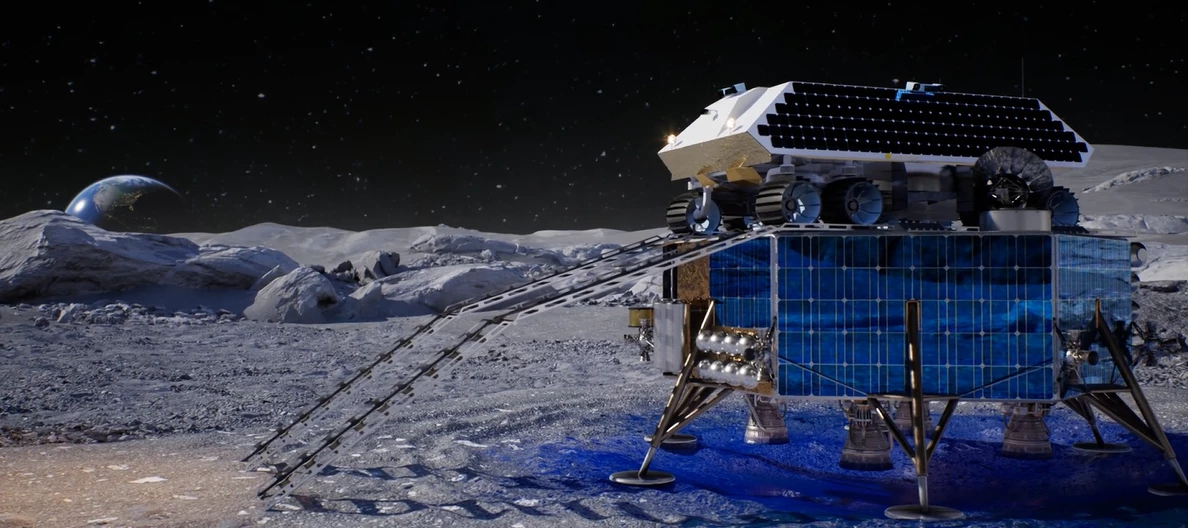Masten Space Systems is developing a robotic rover called Rocket M that could one day mine water on the Moon using rocket blasts. An entrant in NASA's Break the Ice challenge, the rover uses rocket pulses to break up ice-bearing lunar soil or regolith and collect up to 220 pounds (100 kg) of ice particles per day.
Because of the staggering costs of shipping supplies from Earth, NASA's Artemis program to establish a permanent human presence on the Moon is focusing on developing new technologies that will allow future astronauts to live off the land as much as possible. Of particular importance is water, which is used not only for washing socks, but also for life support, fuel production, growing food, and many other purposes.
It's believed that the shadowed areas of the lunar south pole have large deposits of ice in the form of a sort of permafrost in the dark craters. The tricky bit is finding an economical way to mine for this ice in practical quantities, then refine it for transportation and processing.
The Break the Ice challenge requires entrants to design a rover that can be set down on the Aitken Basin near the south pole, which is estimated to hold 154 million pounds (70 million kg) of ice, recover 22,000 pounds (10,000 kg) of water, and return it to a NASA collection place.
Working with Honeybee Robotics and Lunar Outpost, Masten has come up with Rocket M, which weighs 2,465 pounds (1,118 kg) and is delivered to the lunar surface by a lander that also acts as a support station.
Once deployed, the solar-powered craft can travel at up to 2.14 mph (3.45 km/h) and can negotiate 20 percent inclines. It moves to a grid of preselected mining spots and sets down a metal pressure dome that makes a seal on the regolith. A rocket capable of 100 pounds of thrust fires in half-second pulses, subjecting the regolith to direct convective heating, which breaks up the surface to a depth of up to 6.6 feet (2 m).

Once pulverized, the icy ore is sucked into the rover and the grains are passed over a magnetic separator before passing into a pneumatic cyclone chamber that whirls out the heavier particles. The remaining grains go through an electrostatic sorter, a second cyclonic chamber, then over cold plates to recapture any water that's turned into vapor, and the purified ice is then stored for transport. The whole process takes only 5 to 10 minutes.
Masten estimates that the system, which has already been tested on simulated lunar regolith, could mine 12 craters per day. At 220 pounds (100 kg) of ice per crater, that works out to 426 tonnes of water recovered in a year. The rocket system runs on oxygen and hydrogen electrolyzed from water, so it effectively mines its own fuel.
Because of its light weight and mobility, Rocket M is scalable and can work around boulders, breccia, basalt, and other obstacles. In addition to mining ice, the system can also be used to mine dry regolith for building materials.
The video below discusses the rocket mining system.
Source: Masten





